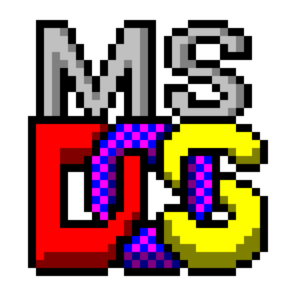
intro
Hi, Who would know this legendary operating system created by Tim Paterson et al while working at Microsoft in 1981, is widely used operating system in the world in the era of the ’80s and 90s and every year certainly doomed to progress to help people in the field of technology. actually honest anyway I also have not been feel but never does in the virtual machine to install this thing that the 6.0 version of her, but dont know file where, and in these days of MS-DOS has changed over to “Command Prompt” may you often using, for example in windows so yes, this time i want discuss Operating System and part of its source code.
MS-DOS Already Open Source
Microsoft has created a new repository on GitHub website that is Naro Source Code of MS-DOS operating system which was developed in 1981-1999 in its own wikipedia Tim Peterson as the creator of the MS-DOS operating system took 11 months to develop this operating system, MS-DOS was originally it was created in collaboration between IBM and Microsoft in creating an operating system for IBM, if gaksalah heck paid $ 25.000- $ 50.000 Si IBM ngebayar the Microsoft in making this operating system, and the first name is “MSX-DOS”, which was launched in 1981, version 1.0, and now microsoft has upgraded open source operating system is right for the purposes of learning and experimentation.
Using Assembly Language
This Assembly language assembly language, in the manufacture of MS-DOS is the Tim Peterson Using Assembly Language to create MS-DOS operating system.
Assembly language , or more commonly known as the Assembly is a low-level programming languages that are used in programming computers , microprocessors , micro controller , and other devices that can be programmed. Implement assembly language representation of machine code in the form of symbols that are relatively better understood by humans. Unlike the case with the languages of high levelgeneral application, assembly language usually support specifically for a or some kind of specific computer architecture. Thus, portability assembly language can not match other languages which is a high level programming language. However, the assembly language allows programmers take advantage of the full capabilities of a hardware specific games that usually can not be limited when made using high-level programming language.
In assembly language, programmers generally use a utility program that is referred to as assembler ( English : assembler ) is used to translate the code in assembly language into machine code for a specific hardware. A command in assembly language will usually translates into an instruction mnemonic in machine code, unlike the case with the compiler in high-level programming language that translates a command into a number of instructions in machine code.
Some famous assembly language software usually provides additional features to facilitate the process of program development, control the assembly process, and tools debugging ( debugging ). ~ Source Wikipedia
source Code

This is the example of an excerpt Code The program of one of the “Format” on MS-DOS, which usually we just typing “Format C:” in MS-DOS or Command Prompt, originally behind the program is quite complicated and long up to 1000 lines in the manufacture of features this format, each source code file extensions: “.ASM” which means the Assembly file and eventually compiled into an .EXE, similar kayaks prompt based application creation using Turbo C ++ or CodeBlocks.
Last Words
Maybe it was just hell from me, lazy typing too long, and his code pretty much scared if instead mostly lazy to read it, if you want to open the link source code, here is the link: https://github.com/Microsoft/MS-DOS
Maybe it was just hell from me, I’ll see you in the next article





